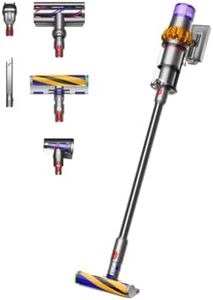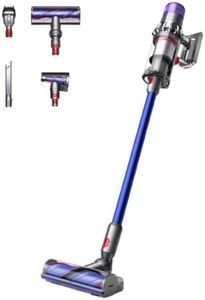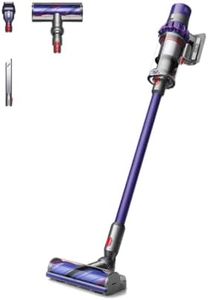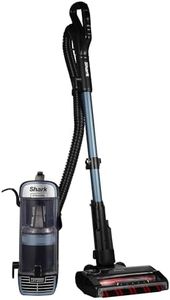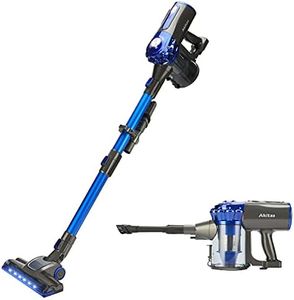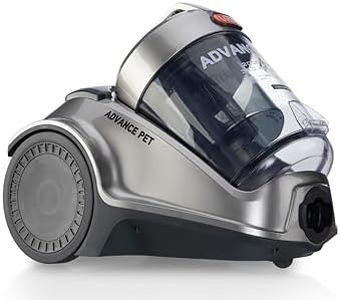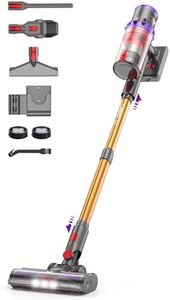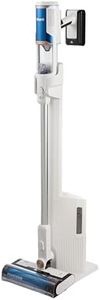We Use CookiesWe use cookies to enhance the security, performance,
functionality and for analytical and promotional activities. By continuing to browse this site you
are agreeing to our privacy policy
10 Best Lightweight Upright Vacuums
From leading brands and best sellers available on the web.Buying Guide for the Best Lightweight Upright Vacuums
Choosing a lightweight upright vacuum is all about finding the balance between cleaning power and ease of use. These vacuums are designed to be easy to carry, push, and store, making them ideal for quick clean-ups and for users who want to avoid heavy lifting. To pick the best one for your needs, it helps to understand the key features that impact performance, comfort, and convenience.WeightThe weight of a vacuum determines how easy it is to move around the house, especially up and down stairs or in tight spaces. Lightweight vacuums usually weigh between 7 to 12 pounds. If you have mobility concerns, frequent stairs, or want something manageable for quick daily use, opt for a model at the lighter end of this range. Heavier lightweight models may offer more power, but trade-off some of the nimbleness. Consider how and where you'll use your vacuum most to decide what's comfortable for you.
Suction PowerSuction power indicates how effectively a vacuum can pick up dirt and debris from various surfaces. While higher suction is generally better, ultra-light vacuums sometimes compromise power for portability. For mostly hard floors or light carpeting, modest suction may be sufficient. If you have thick carpets, rugs, or pets, prioritize models that mention strong suction performance, even if they are a little heavier.
Corded vs. CordlessThis refers to whether the vacuum plugs into an outlet (corded) or runs on batteries (cordless). Corded vacuums offer unlimited runtime but limit your movement to the cord length, while cordless models provide flexibility and portability at the cost of battery life (usually 15–45 minutes per charge). If you need to clean large areas at once or don't want to worry about charging, corded is preferable. Cordless is ideal for quick, convenient cleanups or small living spaces.
Bin/Bag CapacityThis spec tells you how much dust and debris the vacuum can hold before needing to be emptied or have the bag replaced. Smaller, lighter vacuums often have smaller capacities (around 0.5 to 1 liter). For small homes or frequent emptying, this is not a big issue. If you clean large spaces or dislike emptying the bin regularly, look for a larger capacity or easy-empty designs.
Filtration SystemThe filtration system captures fine dust and allergens inside the vacuum. HEPA filters are the gold standard for allergies and trap most particles. Standard filters are sufficient for basic cleaning. If you or your family have allergies, asthma, or pets, prioritize vacuums with HEPA or advanced filtration systems.
Floor Type CompatibilitySome lightweight vacuums are optimized for hard floors, while others work well on carpets or can handle both. The floor type compatibility refers to how well the vacuum performs on different surfaces, sometimes with adjustable brushrolls or different suction modes. Identify whether you have mostly hardwood, tile, thin rugs, or plush carpet. Match the vacuum’s design and features to the surfaces in your home.
Maneuverability and DesignThis refers to how easily the vacuum turns, fits under furniture, and moves in tight spots. Swivel steering and a low-profile head make it easier to clean around obstacles. Consider the layout of your space—lots of furniture or awkward corners may benefit from a vacuum with high maneuverability.
Included AttachmentsAttachments like crevice tools, dusting brushes, and pet hair tools extend a vacuum’s versatility. If you plan to clean upholstery, stairs, car interiors, or above-floor surfaces, choose a vacuum that comes with the right accessories.

